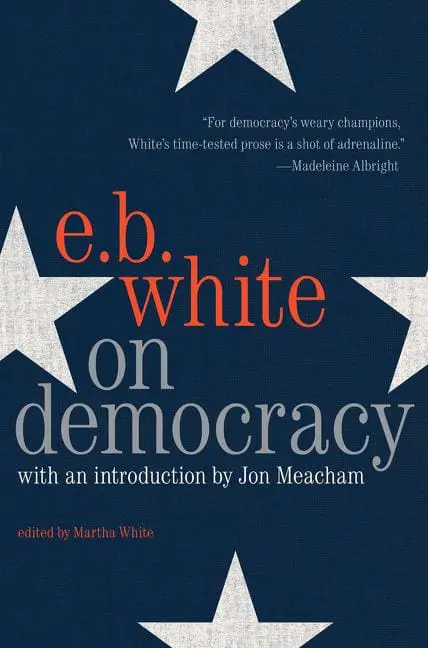It’s not too late to crush your summer reading goals! Jay shares his favorite books for summer 2020, ranging from trees to fungi to birds to nature’s effect on human health. Let us know if you read any of the books on this list and what you think! We always love discussing books!!

The Incredible Journey of Plants by Stefano Mancuso
“In this richly illustrated volume, a leading neurobiologist presents fascinating stories of plant migration that reveal unexpected connections between nature and culture.
When we talk about migrations, we should study plants to understand that these phenomena are unstoppable. In the many different ways plants move, we can see the incessant action and drive to spread life that has led plants to colonize every possible environment on earth. The history of this relentless expansion is unknown to most people, but we can begin our exploration with these surprising tales, engagingly told by Stefano Mancuso. …
In this accessible, absorbing overview, Mancuso considers how plants convince animals to transport them around the world, and how some plants need particular animals to spread; how they have been able to grow in places so inaccessible and inhospitable as to remain isolated; how they resisted the atomic bomb and the Chernobyl disaster; how they are able to bring life to sterile islands; how they can travel through the ages, as they sail around the world.”
Learn. more about the book.
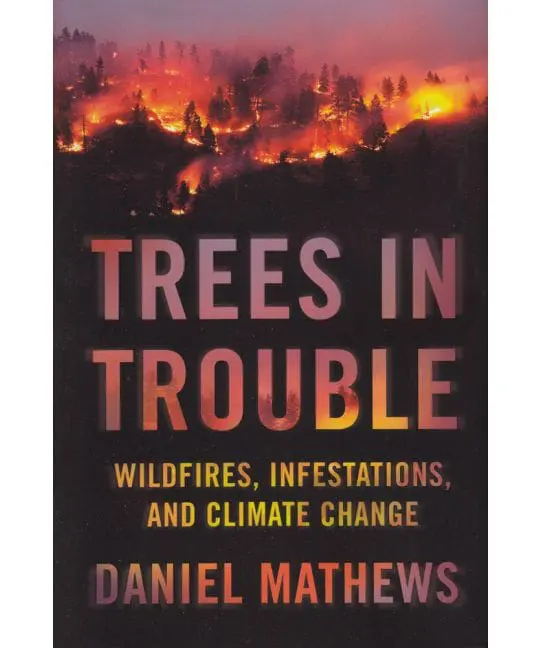
Trees in Trouble by Daniel Matthews
“Climate change manifests in many ways across North America, but few as dramatic as the attacks on our western pine forests. In Trees in Trouble, Daniel Mathews tells the urgent story of this loss, accompanying burn crews and forest ecologists as they study the myriad risk factors and refine techniques for saving this important, limited resource.”
Learn more about the book.
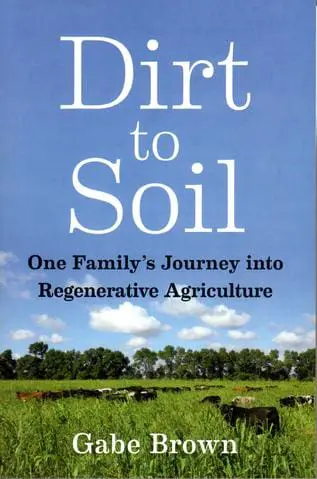
Dirt to Soil by Gabe Brown
“As we know from his story, Gabe Brown didn’t set out to change the world when he first started working alongside his father-in-law on the family farm in North Dakota. But as a series of weather-related crop disasters put Brown and his wife, Shelly, in desperate financial straits, they started making bold changes to their farm. Brown―in an effort to simply survive―began experimenting with new practices he’d learned about from reading and talking with innovative researchers and ranchers. As he and his family struggled to keep the farm viable, they found themselves on an amazing journey into a new type of farming: regenerative agriculture.
Brown dropped the use of most of the herbicides, insecticides, and synthetic fertilizers that are a standard part of conventional agriculture. He switched to no-till planting, started planting diverse cover crops mixes, and changed his grazing practices. In so doing Brown transformed a degraded farm ecosystem into one full of life―starting with the soil and working his way up, one plant and one animal at a time.”
Learn more about the book.
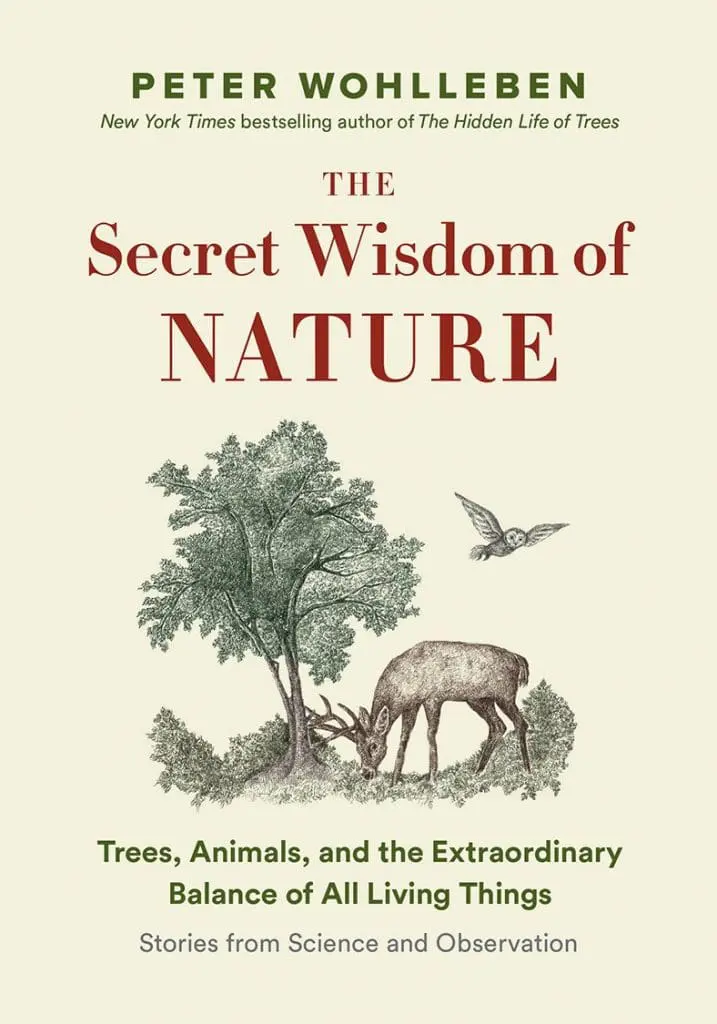
Secret Wisdom of Nature by Peter Wohlleben
“Nature is full of surprises: deciduous trees affect the rotation of the Earth, cranes sabotage the production of Iberian ham, and coniferous forests can make it rain. But what are the processes that drive these incredible phenomena? And why do they matter?
In The Secret Wisdom of Nature, master storyteller and international sensation Peter Wohlleben takes readers on a thought-provoking exploration of the vast natural systems that make life on Earth possible. In this tour of an almost unfathomable world, Wohlleben describes the fascinating interplay between animals and plants and answers such questions as: How do they influence each other? Do lifeforms communicate across species boundaries? And what happens when this finely tuned system gets out of sync? By introducing us to the latest scientific discoveries and recounting his own insights from decades of observing nature, one of the world’s most famous foresters shows us how to recapture our sense of awe so we can see the world around us with completely new eyes.”
Learn more about the book.
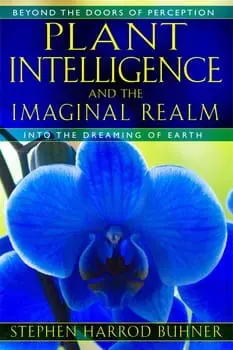
Plant Intelligence and the Imaginal Realm by Stephan Harrod Buhner
“A manual for opening the doors of perception and directly engaging the intelligence of the Natural World
• Provides exercises to directly perceive and interact with the complex, living, self-organizing being that is Gaia
• Reveals that every life form on Earth is highly intelligent and communicative
• Examines the ecological function of invasive plants, bacterial resistance to antibiotics, psychotropic plants and fungi, and the human species
In Plant Intelligence and the Imaginal Realm, Stephen Harrod Buhner reveals that all life forms on Earth possess intelligence, language, a sense of I and not I, and the capacity to dream. He shows that by consciously opening the doors of perception, we can reconnect with the living intelligences in Nature as kindred beings, become again wild scientists, nondomesticated explorers of a Gaian world just as Goethe, Barbara McClintock, James Lovelock, and others have done. For as Einstein commented, “We cannot solve the problems facing us by using the same kind of thinking that created them.”
Learn more about the book.
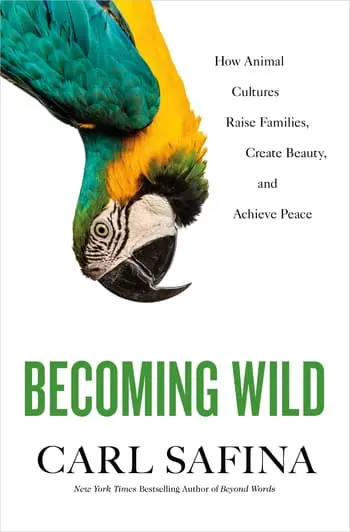
Becoming Wild by Carl Sarfina
“Some people insist that culture is strictly a human feat. What are they afraid of? This book looks into three cultures of other-than-human beings in some of Earth’s remaining wild places. It shows how if you’re a sperm whale, a scarlet macaw, or a chimpanzee, you too experience your life with the understanding that you are an individual in a particular community. You too are who you are not by genes alone; your culture is a second form of inheritance. You receive it from thousands of individuals, from pools of knowledge passing through generations like an eternal torch. You too may raise young, know beauty, or struggle to negotiate a peace. And your culture, too, changes and evolves. The light of knowledge needs adjusting as situations change, so a capacity for learning, especially social learning, allows behaviors to adjust, to change much faster than genes alone could adapt.
Becoming Wild offers a glimpse into cultures among non-human animals through looks at the lives of individuals in different present-day animal societies. By showing how others teach and learn, Safina offers a fresh understanding of what is constantly going on beyond humanity.”
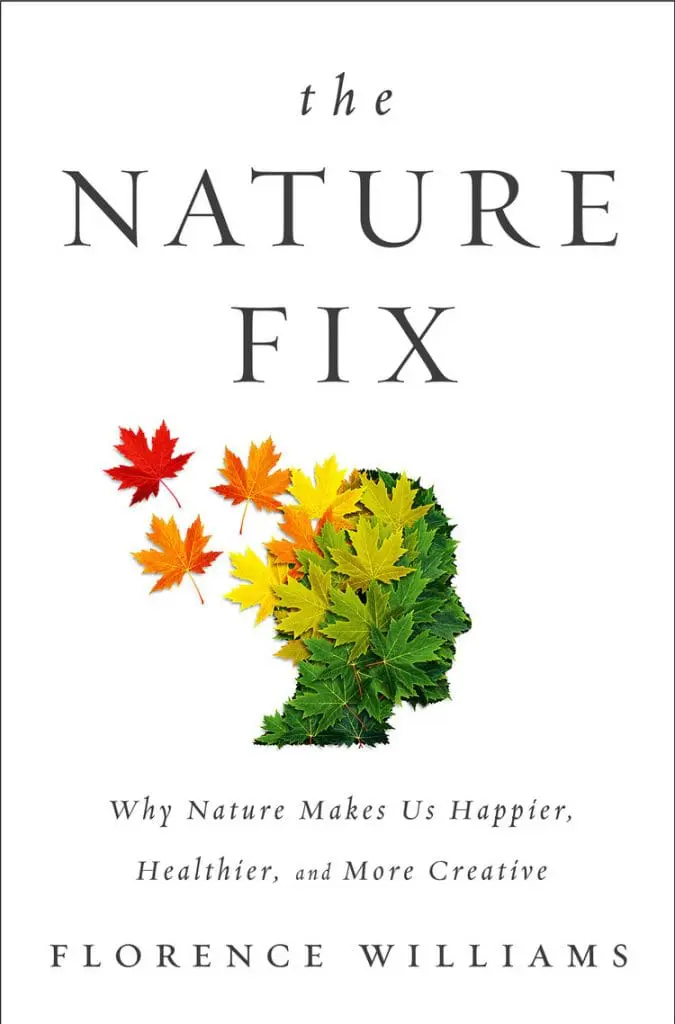
The Nature Fix by Florence Williams
“An intrepid investigation into nature’s restorative benefits by a prize-winning author.
For centuries, poets and philosophers extolled the benefits of a walk in the woods: Beethoven drew inspiration from rocks and trees; Wordsworth composed while tromping over the heath; Nikola Tesla conceived the electric motor while visiting a park. Intrigued by our storied renewal in the natural world, Florence Williams sets out to uncover the science behind nature’s positive effects on the brain.
From forest trails in Korea, to islands in Finland, to groves of eucalyptus in California, Williams investigates the science at the confluence of environment, mood, health, and creativity. Delving into completely new research, she uncovers the powers of the natural world to improve health, promote reflection and innovation, and ultimately strengthen our relationships. As our modern lives shift dramatically indoors, these ideas—and the answers they yield—are more urgent than ever.”
Learn more about the book.
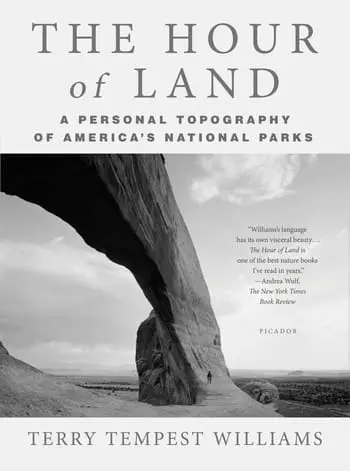
The Hour of the Land by Terry Tempest Williams
“America’s national parks are breathing spaces in a world in which such spaces are steadily disappearing, which is why more than 300 million people visit the parks each year. Now Terry Tempest Williams, the New York Timesbestselling author of the environmental classic Refuge and the beloved memoir When Women Were Birds, returns with The Hour of Land, a literary celebration of our national parks and an exploration of what they mean to us and what we mean to them.
From the Grand Tetons in Wyoming to Acadia in Maine to Big Bend in Texas, Williams creates a series of lyrical portraits that illuminate the unique grandeur of each place while delving into what it means to shape a landscape with its own evolutionary history into something of our own making. Part memoir, part natural history, and part social critique, The Hour of Land is a meditation and a manifesto on why wild lands matter to the soul of America.”
Learn more about the book.
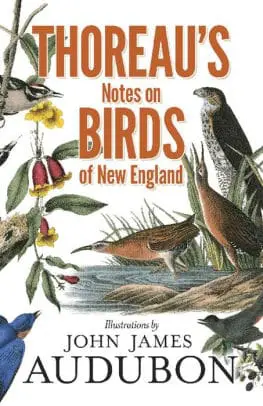
Thoreau’s Notes on the Birds of New England by Henry David Thoreau
“During his two-year residence at Walden Pond, Henry David Thoreau became keenly aware of the natural world that surrounded him. Entries from his journals reflect his soulful, in-depth observations of local wildlife, and his remarks on birds are particularly plentiful and poetic. This book, originally published as Notes on New England Birds in 1910 and edited and arranged by Francis H. Allen, collects Thoreau’s thoughts on the various bird species that populated the New England woods, from the great blue heron to the kingbird and the American finch.
“Open to any page and you will find, besides apt descriptions of the natural world, a cogent remark or a philosophical observation,” noted The Washington Post. Bird lovers and watchers, fans of Thoreau, and naturalists and environmentalists will delight in joining the author as he saunters through the woods and ponders the region’s abundant wildlife. A new selection of 16 full-page color illustrations by John James Audubon enhances the text.”
Learn more about the book.
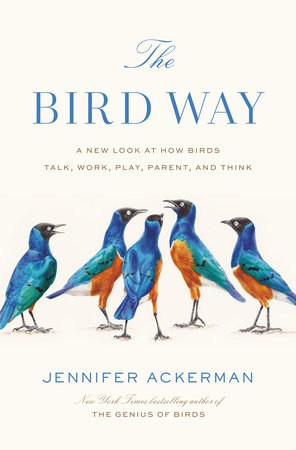
The Bird Way Jennifer Ackerman
“From the New York Times bestselling author of The Genius of Birds, a radical investigation into the bird way of being, and the recent scientific research that is dramatically shifting our understanding of birds — how they live and how they think.
There is the mammal way and there is the bird way.” But the bird way is much more than a unique pattern of brain wiring, and lately, scientists have taken a new look at bird behaviors they have, for years, dismissed as anomalies or mysteries –– What they are finding is upending the traditional view of how birds conduct their lives, how they communicate, forage, court, breed, survive. They are also revealing the remarkable intelligence underlying these activities, abilities we once considered uniquely our own: deception, manipulation, cheating, kidnapping, infanticide, but also ingenious communication between species, cooperation, collaboration, altruism, culture, and play.”
Learn more about the book.
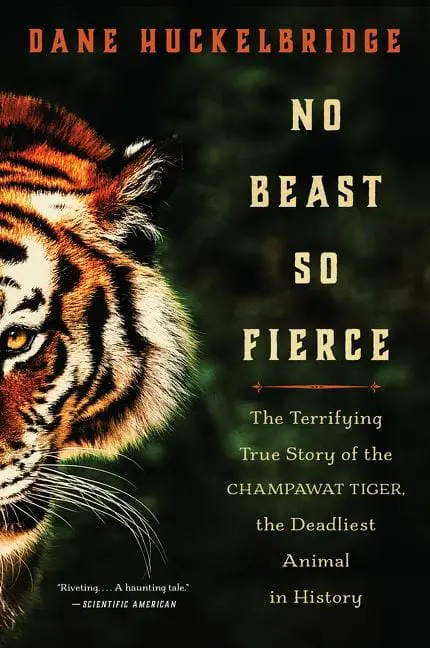
No Beast so Fierce by Dane Huckelbridge
“The astonishing true story of the man-eating tiger that claimed a record 437 human lives.
Nepal, c. 1900: A lone tigress began stalking humans, moving like a phantom through the lush foothills of the Himalayas. As the death toll reached an astonishing 436 lives, a young local hunter was dispatched to stop the man-eater before it struck again. This is the extraordinary true story of the “Champawat Man-Eater,” the deadliest animal in recorded history.
One part pulse-pounding thriller, one part soulful natural history of the endangered Royal Bengal tiger, No Beast So Fierce is Dane Huckelbridge’s gripping nonfiction account of the Champawat tiger, which terrified northern India and Nepal from 1900 to 1907, and Jim Corbett, the legendary hunter who pursued it. Huckelbridge’s masterful telling also reveals that the tiger, Corbett, and the forces that brought them together are far more complex and fascinating than a simple man-versus-beast tale.”
Learn more about the book.
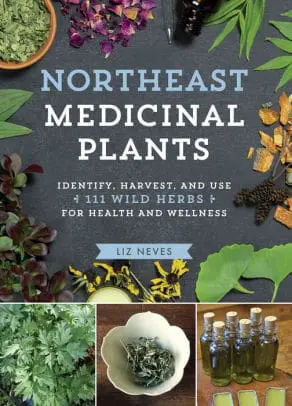
Northeast Medicinal Plants: Identify, Harvest, and Use 111 Wild Herbs for Health and Wellness by Liz Neves
Liz Neves is your trusted guide to finding, identifying, harvesting, and using 111 of the region’s most powerful wild plants. You’ll learn how to safely and ethically forage, and how to use wild plants in herbal medicines including teas, tinctures, and salves. Plant profiles include clear, color photographs, identification tips, medicinal uses and herbal preparations, and harvesting suggestions. Lists of what to forage for each season makes the guide useful year-round.
Thorough, comprehensive, and safe, this is a must-have for foragers, naturalists, and herbalists in Connecticut, Maine, Massachusetts, New Hampshire, New Jersey, New York, Pennsylvania, Rhode Island, and Vermont.
Learn more about the book.
On Democracy by E. B. White
“A collection of essays, letters and poems from E.B. White, “one of the country’s great literary treasures” (New York Times), centered on the subject of freedom and democracy in America.
“I am a member of a party of one, and I live in an age of fear.”
These words were written by E. B. White in 1947.
Decades before our current political turmoil, White crafted eloquent yet practical political statements that continue to resonate. “There’s only one kind of press that’s any good—” he proclaimed, “a press free from any taint of the government.” He condemned the trend of defamation, arguing that “in doubtful, doubting days, national morality tends to slip and slide toward a condition in which the test of a man’s honor is his zeal for discovering dishonor in others.” And on the spread of fascism he lamented, “fascism enjoys at the moment an almost perfect climate for growth—a world of fear and hunger.”
Anchored by an introduction by Pulitzer Prize-winning historian Jon Meacham, this concise collection of essays, letters, and poems from one of this country’s most eminent literary voices offers much-needed historical context for our current state of the nation—and hope for the future of our society.”
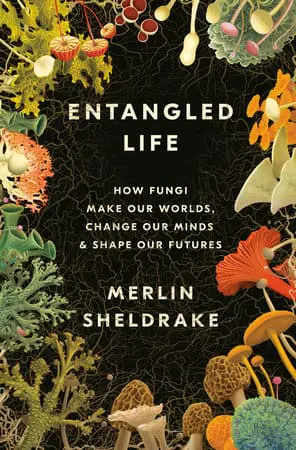
Entangled Life by Merlin Sheldrake
“When we think of fungi, we likely think of mushrooms. But mushrooms are only fruiting bodies, analogous to apples on a tree. Most fungi live out of sight, yet make up a massively diverse kingdom of organisms that supports and sustains nearly all living systems. Fungi provide a key to understanding the planet on which we live, and the ways we think, feel, and behave.
In Entangled Life, the brilliant young biologist Merlin Sheldrake shows us the world from a fungal point of view, providing an exhilarating change of perspective. Sheldrake’s vivid exploration takes us from yeast to psychedelics, to the fungi that range for miles underground and are the largest organisms on the planet, to those that link plants together in complex networks known as the “Wood Wide Web,” to those that infiltrate and manipulate insect bodies with devastating precision.
Fungi throw our concepts of individuality and even intelligence into question. They are metabolic masters, earth makers, and key players in most of life’s processes. They can change our minds, heal our bodies, and even help us remediate environmental disaster. By examining fungi on their own terms, Sheldrake reveals how these extraordinary organisms—and our relationships with them—are changing our understanding of how life works.”
Learn more about the book.
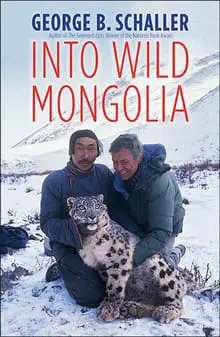
Into Wild Mongolia George B. Schiller
“Explore the wonders of wild Mongolia through the eyes of a distinguished field biologist Mongolia became a satellite of the Soviet Union in the mid-1920s, and for nearly seven decades effectively closed its doors to the outside world. Biologist George Schaller initially visited the country in 1989 and was one of the first Western scientists allowed to study and assess the conservation status of Mongolia’s many unique, native wildlife species. Schaller made a number of trips from 1989 to 2018 in collaboration with Mongolian and American scientists, witnessing Mongolia’s recovery and transition to a market economy after the collapse of the Soviet Union.
This informative and fascinating new book provides a firsthand account of Schaller’s time in this little-known and remote country, where he studied and helped develop conservation initiatives for the snow leopard, Gobi bear, wild camel, and Mongolian gazelle, among other species. Featuring magnificent photographs from his travels, the book offers a critical, at times inspiring contribution for those who treasure wildlife, as well as a fresh perspective on the natural beauty of the region, which encompasses steppes, mountains, and the Gobi Desert.”
Learn more about the book.
Even More Book Suggestions
If you enjoyed this post, be sure to read our COVID-19 Reading List
—
Green Jay Landscape Design
914-560-6570
